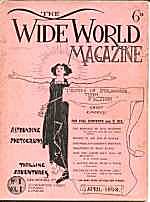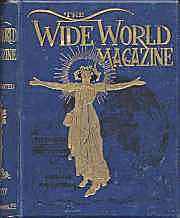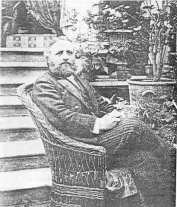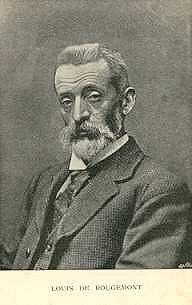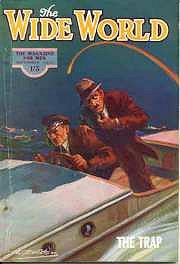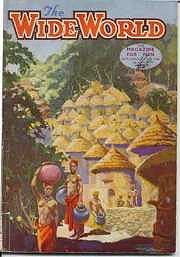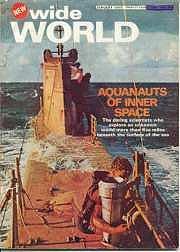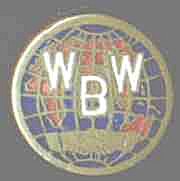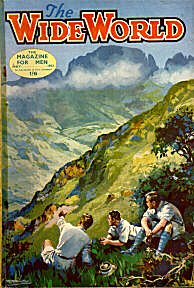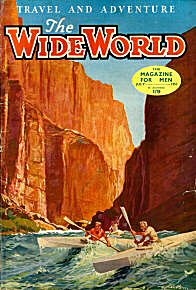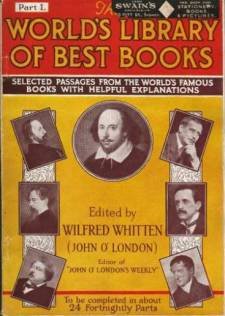| bc |
1234OTHER CONTENTS
The "soul" of the Wide World for most of its life was long-time editor Horace Pitt-Kethley, who introduced in 1949 the "Wide World Brotherhood" which offered its members badges and stickers, penfriends and safe havens in far-off places. Over its lifetime the magazine missed four issues. The May 1941 issue was not printed because the printer's works was completely destroyed by a German bombing raid. In May 1947 printing problems led to two issues being combined. Industrial action by printers caused a similar combined issue in September-October 1950 and the April-May issue for 1956 was also combined.
The magazine ceased publication in December 1965 (issue number 807 in volume 135). By that time theWide World appeared to have lost its somewhat naÔve, unconscious sense of fun and had become something of a poor man's national geographic. Australian (and presumably New Zealand and South African) readers and collectors should note that the issue numbers were, from some point in the 1920s or 30s, a month behind the English issues. This makes for enormous confusion when considering buying magazines from overseas. There appear to be few "serious" collectors of Wide World, but its marvellous pulp-style covers are extremely attractive and nice specimens seem to attract relatively high prices in the USA. Issues from the war years - especially World War 1 - are quite hard to find owing to the big paper-drives of that time and are usually printed on poor-quality paper, making good copies particularly scarce. Bound volumes are not too uncommon, even from the early years. Prices in the publisher's attractive blue-cloth binding vary from about $20 to $50. The drawback with bound volumes is their lack of the illustrated covers and the equally fascinating advertisements. Victor Pitt-Kethley, WW Editor by Fiona Pitt-Kethley Some brief info on Victor Pitt-Kethley - feel free to ask further questions if you think I might be able to answer them. [Thanks for your recollections, Fiona. - Editor] "Old Vic" as he was known to his sons, was editor for 50 years. Both he and his father Andrew changed the form of their name slightly. It is a Scottish place name spelt as Pitkethly (near Perth). The family originally came from there via Fife. Both had the original name on their birth certificates then the version you see on their writing on their marriage certificates. (I suppose they thought a hyphen added class!) You'll find Andrew's children's books occasionally on bookseller's lists. He mostly did one-syllable versions of well-known classics. He started life in Edinburgh before coming South. Vic was born in the North of England, I believe. He died when I was eighteen months old so I don't have memories of him although I heard a lot about him from my parents. He lived in Amersham, Bucks and made a fair amount of cash from his writing (something neither my father nor I were all that good at.) I visited his house a bit after his death as it stayed in my uncle's possession until I was seven or so. It was a large mock Tudor house with a large garden. It would be worth a fortune these days. Vic had a housekeeper, gardener and maids, so my father grew up in some style. Vic must have been close to alcoholic judging by the amounts he consumed. After my parents married my mother recollected spending a Christmas there. She said she saw a whole crate of champagne go in and no-one but Vic had a drop! Because of the large garden the house was registered as a farm during the War. My father kept chickens and geese. They also produced a lot of soft fruit and apples and pears. Vic ate enormous quantities of strawberries. Vic was talented in several directions. He was a good artist. I have tiny plaque of a ship he painted. My mother claimed he was a very good watercolorist. She remembers him forging extra figures repeatedly in a Christmas card as a joke. He kept bringing it out and saying: "It's amazing what good value this card was. I keep finding extra people in it." Eventually she realised he was painting them in. He could also do carpentry and carving. He had made himself an Elizabethan-style carved four-poster bed. He was also very talented as a gardener. He had great humour and intelligence. He was often impatient with his sons, feeling they didn't have as much get-up-and-go as he did! His wife, Ellen Read, was beautiful judging by the only photo I've seen. She died before I was born. She led an extremely idle life thanks to the servants ≠ shopping and cinema. Vic was devastated when she died. My father claimed Vic was totally untravelled and never left England. You will find other articles by him in the Strand Magazine (I collect this magazine and generally prefer it to the Wide World). There was one piece on Motoring in Scotland which amused my father who said: "He couldn't drive and he hadn't been to Scotland!" Vic ran the Wide World on a shoe-string budget. The vast majority of the stories were contributed free by non-writers. Vic would then rewrite them into his own style. Many readers also sent him presents ≠ a real Panama from Panama, etc. My father remembers him being sent a paperweight in the shape of a toad (or so he thought) from somewhere down the Amazon. After it had sat on the desk for a day or two it began moving and proved to be a rare species! Wide World
Contributor by sidneya@shaw.ca After that, I placed a half-dozen other WW stories, and built a sort of pen-friendship with the editor Victor Pitt-Keithley, which led to my also writing for his other mag, "Tit-Bits." We had a cordial correspondence until I proposed sending him an article about "Gray Owl," the Englishman, Archie Belaney, who posed as a Canadian Indian and was an early conservationist. Then, Pitt-Kiethley surprised me with a somewhat irritated note, to the effect that I should not be writing about "people who pretend to be who they are not", which he would not publish under any circumstances. It only dawned on me years later what the trouble had been, when I learned about the Louis de Rougemont tall-tale scandal that had made the WWM a laughing-stock long ago. Which reminds me... I actually saw Gray Owl in person, around 1936, when he was on a speaking tour of Britain. At the time, he was widely believed to be a Canadian native, teller of adventures with animals in the Canadian Far North. He addressed a large audience at our local church, and I still recall my indignant 6-year-old's voice piping up to my father, "But he's not a real Red Indian -- he's an *Englishman!!!*" I was smiled at condescendingly and told to hush. Odd, how a little boy could detect what virtually every adult could not. Belaney's actual origin was unmasked a few years later. Perhaps the
WWW was not up to high literary standards, but those
early freelance sales built my writing experience and
confidence, helping me to move on to more substantial
work. It may seem hopelessly dated and naive by 2002
standards, but WWW once was -- in pre-TV days -- a window
on far away places and tales of high adventure. Now,
reading other people's comments here about the old Wide
World Magazine gave this old man some enjoyable moments
of nostalgia. The Wide World Brotherhood by Eddie Collins The main feature of the WWB page in the magazine was a list of people seeking pen-friends. I believe this was very popular since it put people all over the world in touch and, for my part, provided interesting correspondence.
So, as a method of adding to club funds, we held quite successful dances there. The small band that we hired for the dances was run by a WWB member, so the rates were pretty good. At that time people were dancing, what today’s generation would consider uncool dances, fox-trots, waltzes, quick-step. Personally I would much rather hold the girl than try to out-gyrate her. Learning ballroom dancing was part of my courtship. We used to listen to the BBC serial 'Journey into Space., then run to catch the bus to get to our dance lessons on time. In due course Coral and I married and moved away from the area and sadly the club folded. Several of the members married each other. One of our members, Jean, moved with her family to Australia, We can’t remember her surname, but it was a long time ago. Another of our members worked on the Goodwin Sands lightship. We are still in touch with a number of the old members.
Edward (Ted) Gulliver JP (22.3.02) I have very clear memories of the Wide World Magazine and the Brotherhood, being one of the first members. Being employed by the publishers George Newnes from the age of fourteen in their publicity department advertising the magazine gave me a great insight of this rather unique monthly. I can remember as a junior destroying old pre war artwork to make room for new files. What that artwork used for the Wide World Magazine and another magazine The Strand would be worth these days is beyond thinking about. My association was a very happy one the publishing house was one where quite of few of the employees were related to one another, I had brothers, father and uncles working within the organisation. When I came to Australia in 1962, I worked for the subsidiary company here but left after a take over by Grillers. A great Magazine published by a great Company. Extract
concerning the Wide World Brotherhood
Louise de Rougemont was a remarkable character with an even more remarkable story to tell. He had spent 30 years in the unexplored lands of North Australia! This gentleman arrived at the London offices of Newnes the publishers one day in 1898. George Newnes had created 'The Wide World Magazine' for just such 'true life' stories. It was a companion magazine to the better known 'Strand'. Newnes had de Rougemont interrogated by members of various London learned societies to ascertain the truthfulness of his story. Whatever the outcome of these discussions, Newnes ensured the story saw publication with WWM over 9 issues - from August 1898 until May 1899. Soon after the first instalment appeared, a certain London paper did its best to prove that de Rougemont was a hoaxer par excellence. Although our adventurer had travelled widely, his only known experience down under was employment as butler to an unnamed titled lady. Whatever the truth of the matter, de Rougemont and the WWM were linked forevermore. The interest is in the telling, not the story. THE WIDE WORLD MAGAZINE, later shortened to WIDE WORLD, first appeared in April 1898 and run until December 1965: a total of 807 issues. WWM's motto was 'Truth is Stranger than Fiction'. Its subtitle, which probably ensured its popularity among the younger male members of the household was 'The Magazine for Men'. The editor in 1949 established the 'Wide World Brotherhood', the only rule of which was 'to treat fellow members as brothers and give them any help possible'. Did sisters (and their mothers) read WWM? We'd love to hear from you. WORKING FOR GEO. NEWNES by Ted Gulliver I started work with the company in 1944. The buzz bomb period of the war had started and the schools closed down again. My mother did not want to split the family so she refused evacuation. I had to do something so my mother wrote to Geo. Newnes (my father had been in the army since Sept, 1939) asking if they had any prospects. They asked me to go up for an interview and there I met Mr. Burge, the secretary of the company. All I ever wanted to do was draw but there was little in this area .Most work was farmed out except for odd pieces which were handled by artists, most of which seemed to be in their eighties, so he gave me a job as an office boy in the counting house. I sat on a very high stool and wrote out receipts and filled in the share certificates. I think if I wrote the name Lombard Bank once, I wrote it over and over again. Late 1944 they began to reorganise and started the publicity department. There were a few people coming out of the services through ill-health etc., and I was offered a job as an apprenticeship for the princely sum of 25/- a week. There I stayed until my National Service in 1948. Geo. Newnes' address was Tower House, Southampton Street, right on the corner of Tavistock Street. It was then a very modern building, built right next to the old Newnes building. When I went there, it was not being used mainly because it had been bombed though not demolished and you could still walk around the four floors. You were not really allowed to go in but the place was a magnet to myself and a couple of other 14 year old boys. After the war this building contained the editorial offices of the Strand magazine, Tit-Bits, Wide World, John O' Londons Weekly and some of the pulp weeklies, Glamour , Lucky Star, Silver Star and the like. All the glamour magazines Women's Own, Modern Woman, Home Notes etc., had their offices in Tower house itself and this is where I was all the time until 1962. We were on the seventh floor in the tower of the building and had a great view of the surrounding area. There were not many buildings of this height in the Strand area; I nearly forgot there were also the offices of Smallholder, Amateur Gardening, and the Practical group under the editor F.J.Camm, a man who terrified me as a youngster. He had a quick temper and threw things around his office. He was a brilliant man, brother of Sir Sydney Camm, who designed the Hawker Hurricane and the Hawker Kestrel (the aircraft that finally became the Hawker Harrier). The Practical group was made up of Practical Engineering, Practical Mechanics, Practical Wireless, Practical Television and later in the late1950s Practical Householder. ' FJ', as Camm was called, also invented things one of which he gave me. It was a small lighter which did not need flint or fuel. I never found out how it worked and lost it in a move some years ago, so now I will never know. Around the corner in Tavistock Street were the Country Life offices. Over the years I spent many hours working on the publicity for this magazine and went on a few photographic shoots at some of the stately homes of Britain. A lot of time was also spent around the old buildings of London where I found out more about London than I would have ever done otherwise. When I was with the counting house I used to be sent out delivering cheques by hand to authors of some of the books that we published such as Richmal Crompton, author of the 'William" books, Enid Blyton and saw quite a few of the famous contributors to the magazines, I should have got autographs but became quite blasť to the situation. I did not realise how famous these people I was meeting would become later on. When I came out of the RAF I got into the publicity production side of things; spent a lot of time with printers, engravers, typesetters and the like. Names that spring to mine are Century Engraving, Laytons, Gee and Watson, Premier Engraving, Sun Engraving and also with all the National and Provincial Newspapers. When I was young I delivered by hand all the material for our advertising to everyone of the newspapers and got to know most of the commissionaires on the offices. Some of them were little Hitlers; they made the rules on which way you came in their particular building. I can remember there was one at Kemsley House. He and I had a running battle, the quickest way in was through the front door but he wanted to send all the boys through the side entrance. This meant a couple of minutes added on to the delivery and it became a point of honour for us boys to go through the front way. TiT-BiTs was always a favourite of mine. We used to sell the pin-up photos of models; they included Diana Dors, Jill Ireland, Sylvana Mangano, and one I vividly remember was Mae West. I have no idea how old she was but even the photos that we got from the states did not impress us. They all needed some of the heaviest of retouching and yet they sold extremely well. A lot of the pin-up photos were taken at the Country Life Studio, though we used photos from Baron and Tony Armstrong Jones studio Buttercup. There were so many things that we were into; the Amateur Gardening Awards and Smallholder Competition and of course the Wide World Brotherhood, the person responsible for these was Charles Norman. Chas was one of the nicest people I ever met, so full of enthusiasm he taught me so much about the finer points of publicity work that I have always been grateful for. Chas was a great gardener and actually produced different types of tomatoes, 'The Norman Wonder' the miniature 'Wonder'; beautiful tomatoes tasted wonderful ( I often wonder if they are still around). I spent quite a bit of time at his house at Raynes Park helping out and again when he moved to Little Bookham. I can remember one time when we run foul of the press council. It was over some poster advertising for TiT-BiTs Diana Dors pin-up. They objected to the bikini; the top was too revealing and the bottom in their opinion was definitely obscene. If you measured it by today's standards Di was overdressed, anyway out went the boys with airbrushes etc., and all over London they airbrushed the crotch and added materials to the offending costume. I have to admit we were furious at the time but had a good laugh in later years. I was responsible for the publicity production schedule for Woman's Own. Promotions were sheer hard work, they went on for about 6 weeks at a time. We boosted the circulation up to nearly 2 million per week, one of these we had, "The Little Princesses" by Crawfie the Royal governess, was a real hit, serialised in the magazine backed by one of the biggest campaigns ever, it was in those days BIG! As the years go by I can only look back on them with great pleasure, there were great friendships and the feeling in the publishing world was good. I was not in the UK when all the printing troubles of the sixties started. I left that and the new technical advances made in printing. Whether these were good to the feeling of belonging to the industry I have my doubts so I suppose I am glad that I made a complete turn in my career and left the publishing trade in 1967 and joined the Australian Federal Government where I spent a further 25 years.# GALLERY OF OTHER NEWNES PUBLICATIONS - only one, so far.
WIDE WORLD MAGAZINES, SINGLE OR BOUND VOLUMES
I will purchase, trade for other issues or for book binding and restorations. Greg Ray (page author) |
bc |
